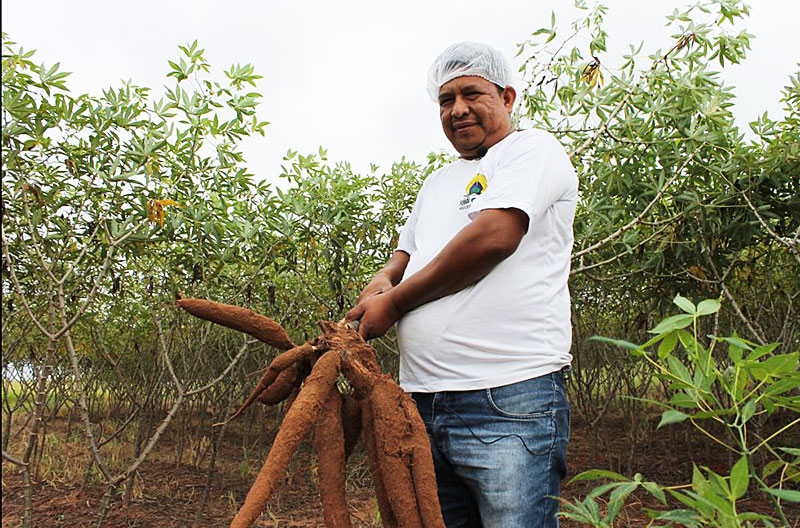It’s known by several names -- cassava, manioc and tapioca -- but is most commonly called yuca in Spanish and Portuguese. This root crop is a staple food of over 800 million people around the world. In Latin America, it is one of the most important crops for indigenous populations.
Cassava is an essential part of the daily diet in Brazil, the world’s fourth largest producer (21.2 million tons in 2013). So much so that President Dilma Rousseff sang its praises during one of her speeches. There are dozens of ways to prepare this root crop. Once you’ve tried it, have you ever wondered how it arrived to your plate?
Thousands of Brazilian families depend on cassava production for their livelihoods. This is the case of the Terena indigenous community living in Ekeruá Village, just 370 kilometers from the largest city in South America, Sao Paulo.
Up until three years ago, Ekeruá farmers would rise early, hop on the back of a truck, work from sunup to sundown in distant fields and then return home with scant earnings. Although there was a cassava plantation nearby, it only employed five people. Production depended on both chemical fertilizers and pesticides.
The situation of the Terena people changed dramatically when they had the opportunity to reinvent the crop. It was also a chance to keep their culture alive. A project that brought together the federal and state (Sao Paulo) governments, the World Bank and a private university, among others, has enabled this indigenous group to become cassava champions: they now produce four times more cassava, and more importantly, they do so without harming the environment.
Over the past three years, the local area planted with the crop increased from 24 to 100 hectares, without the need to resort to deforestation. Traditional practices such as murundum were recovered, which consists of forming dirt mounds. This practice helps in the manual harvesting of the crop and protects the soil against erosion and drought. The Terena also began to experiment with new organic fertilizers that make use of cassava peels.
A new incentive
In addition, the Terena adopted a new variety of (non-transgenic) root: IAC 576-70, known as amarelinha, which is more resistant to pests and produces higher yields than the variety used previously. As a result, production increased by 370%, which gave farmers a new incentive for planting cassava in their own plots.
"We now work for ourselves and have returned to living in keeping with our culture,” says production coordinator Lourenço de Camilo. Work begins early, at about 5am, and ends five hours later. The rest of the time, the Terena take care of their homes and children and make crafts (another source of income).
The harvested cassava is peeled and sent to a cooperative, where the root is cooked and vacuum-packed. The Terena are now planning to acquire the technology needed to perform those tasks in their village. They also want to make other sub-products, such as cassava flour, for example. Additionally, they are trying to plant other crops, such as Aloe vera and rubber to avoid depending exclusively on cassava.
The project has enabled this indigenous village and another 22 farm families of Sao Paulo to access new markets. This World Bank initiative with the Terena is one of several investments the organization is making with indigenous populations of Latin America.

